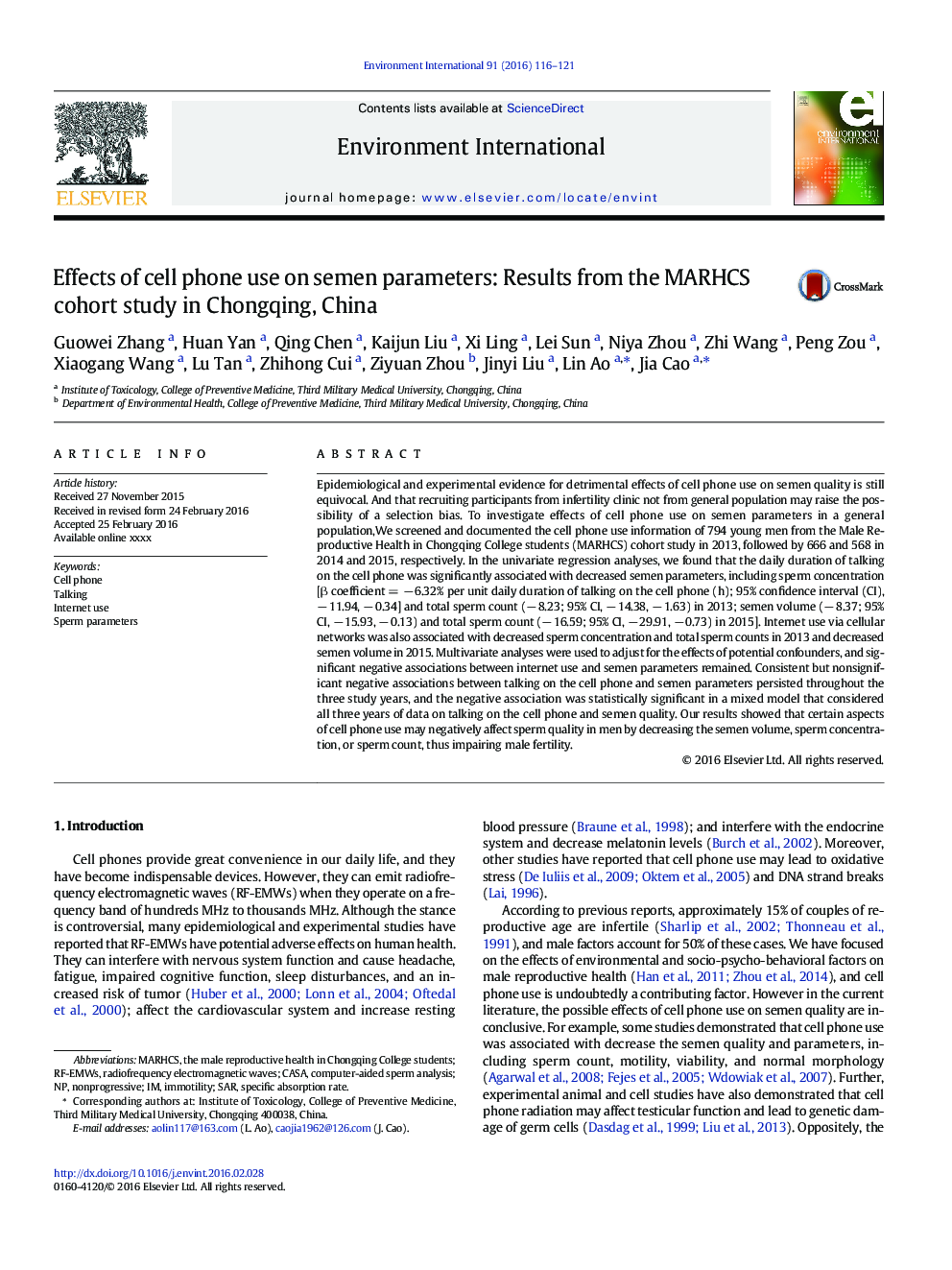| Article ID | Journal | Published Year | Pages | File Type |
|---|---|---|---|---|
| 6313195 | Environment International | 2016 | 6 Pages |
Abstract
Epidemiological and experimental evidence for detrimental effects of cell phone use on semen quality is still equivocal. And that recruiting participants from infertility clinic not from general population may raise the possibility of a selection bias. To investigate effects of cell phone use on semen parameters in a general population,We screened and documented the cell phone use information of 794 young men from the Male Reproductive Health in Chongqing College students (MARHCS) cohort study in 2013, followed by 666 and 568 in 2014 and 2015, respectively. In the univariate regression analyses, we found that the daily duration of talking on the cell phone was significantly associated with decreased semen parameters, including sperm concentration [β coefficient = â 6.32% per unit daily duration of talking on the cell phone (h); 95% confidence interval (CI), â 11.94, â 0.34] and total sperm count (â 8.23; 95% CI, â 14.38, â 1.63) in 2013; semen volume (â 8.37; 95% CI, â 15.93, â 0.13) and total sperm count (â 16.59; 95% CI, â 29.91, â 0.73) in 2015]. Internet use via cellular networks was also associated with decreased sperm concentration and total sperm counts in 2013 and decreased semen volume in 2015. Multivariate analyses were used to adjust for the effects of potential confounders, and significant negative associations between internet use and semen parameters remained. Consistent but nonsignificant negative associations between talking on the cell phone and semen parameters persisted throughout the three study years, and the negative association was statistically significant in a mixed model that considered all three years of data on talking on the cell phone and semen quality. Our results showed that certain aspects of cell phone use may negatively affect sperm quality in men by decreasing the semen volume, sperm concentration, or sperm count, thus impairing male fertility.
Keywords
Related Topics
Life Sciences
Environmental Science
Environmental Chemistry
Authors
Guowei Zhang, Huan Yan, Qing Chen, Kaijun Liu, Xi Ling, Lei Sun, Niya Zhou, Zhi Wang, Peng Zou, Xiaogang Wang, Lu Tan, Zhihong Cui, Ziyuan Zhou, Jinyi Liu, Lin Ao, Jia Cao,
